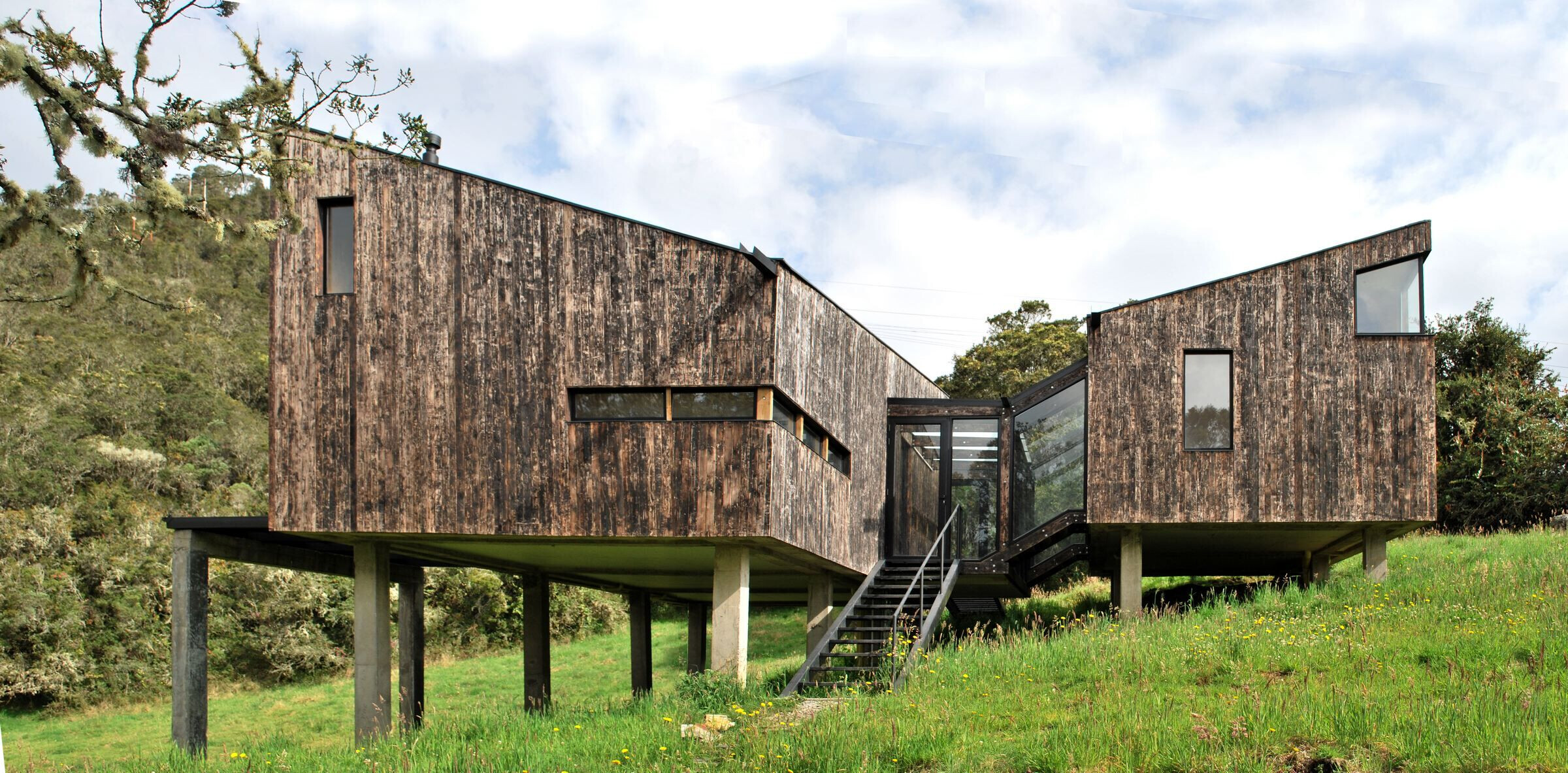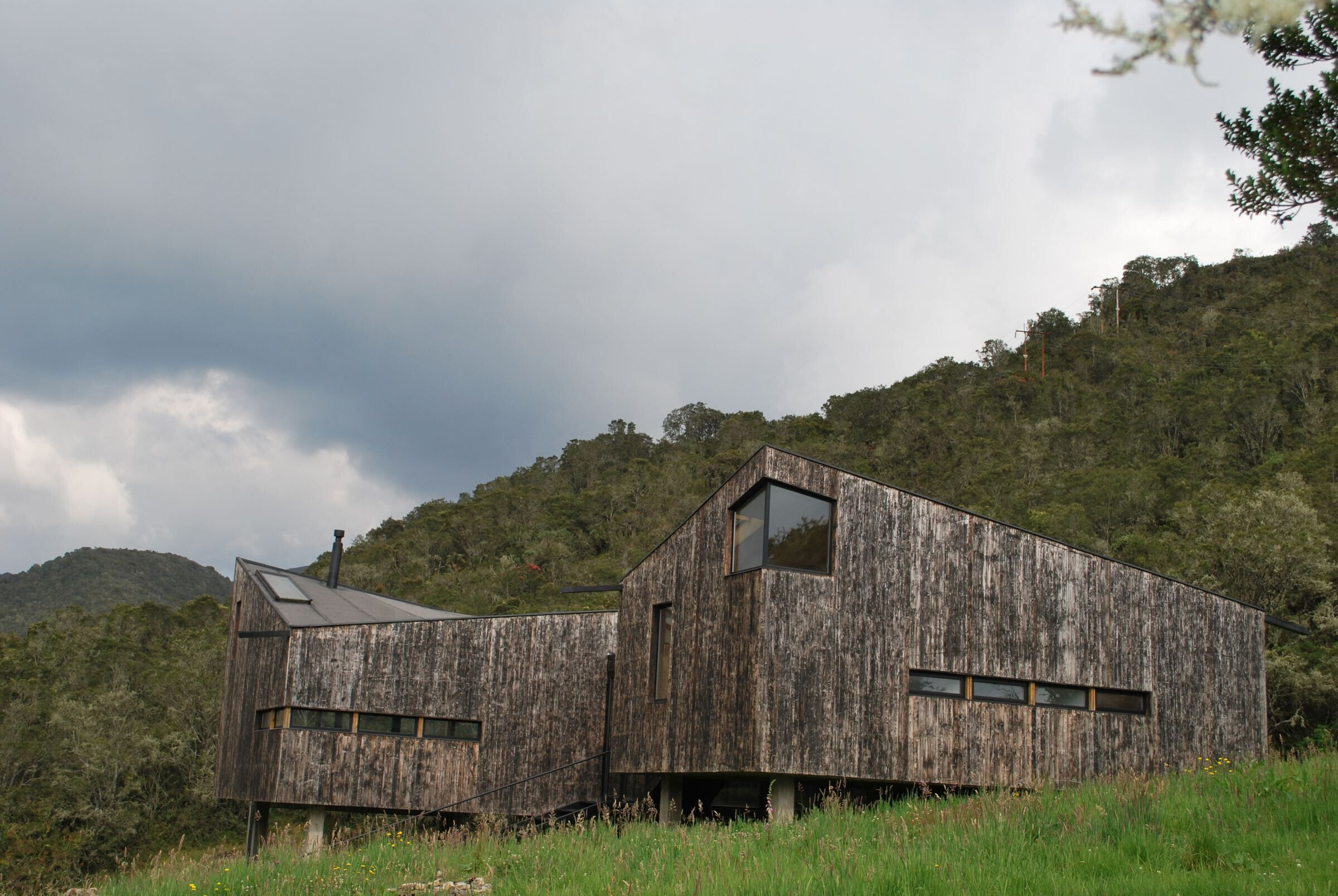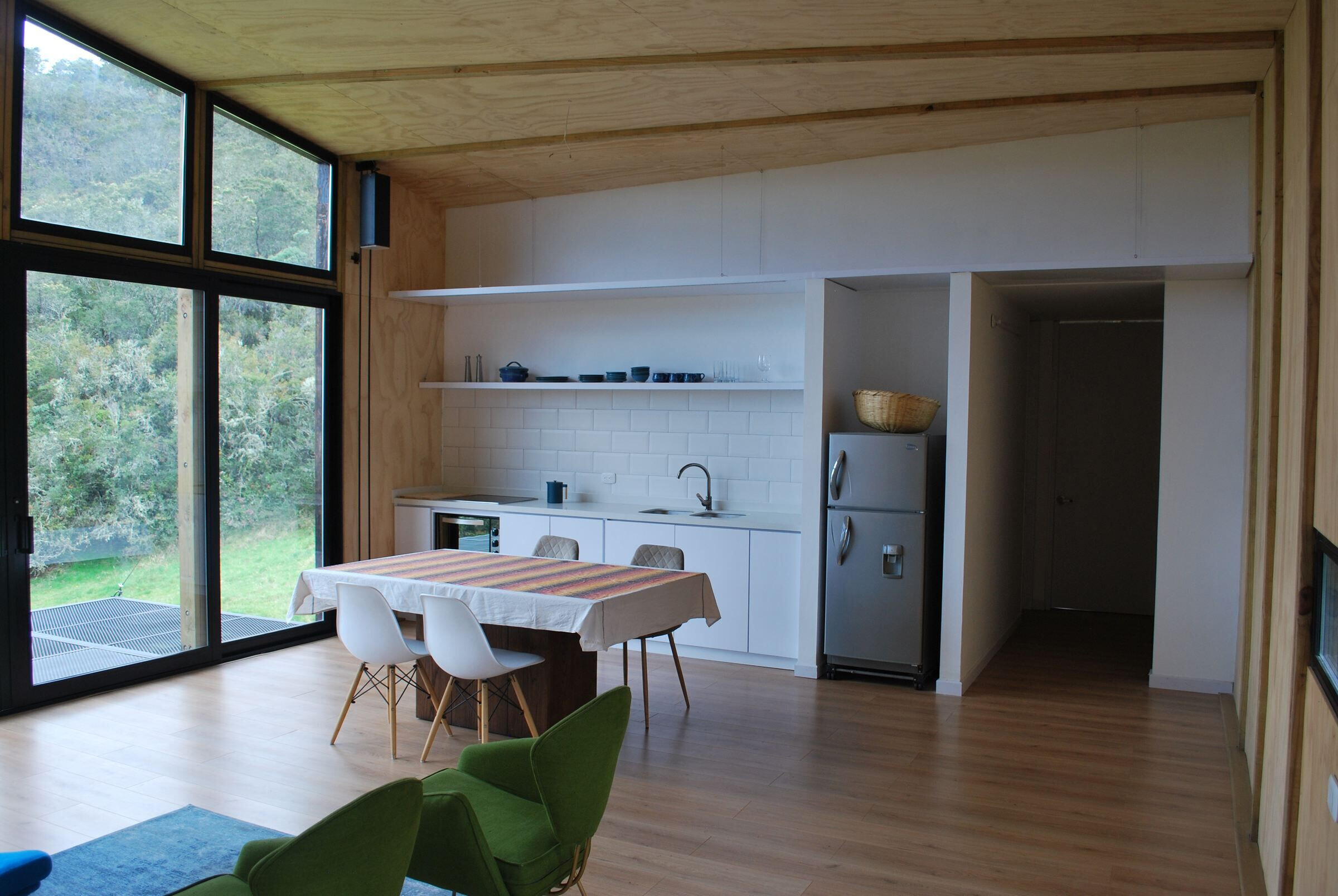Following 3 years of research alongside Cristina Albornoz, ZITA (led by Daniel Feldman) designed and built the House in the Andean Mooreland in an attempt to create an example of how to build within this fragile ecosystem with high environmental value.

Located at an altitude of 3,250 meters above sea level and within the tropics of Capricorn and Cancer, Andean Moorelands are permanently producing water thanks to the relation between its unique vegetation capable of absorbing water from the atmosphere, and its perpetual cloud forest condition. This cloud landscape is a permanent feature on the horizon, permanently varying the depth of view and with it hiding and revealing the mountains.

Seeking to step on the vegetable surface in a light manner, the house stands on concrete pillars which are designed to work without needing a floor beam tying them together and therefore avoiding any interruption to undergrounds water flows. Atop the pillars a series of prefabricated timber porticos are installed and tied together by means of a system of prefabricated OSB walls and roof which operate as a structural diaphragm making the house’s skin part of its structure. By prefabricating the house, both construction time and waste were reduced. The assemblage of the house was performed 100% by hand and therefore avoiding the need for heavy machinery.

The program is divided into two modules connected by a suspended sunroom. The main module holds the master bedroom and bathroom, and all communal areas. The second module contains two rooms and two bathrooms. By fragmenting the program, the scale of the house is broken up and reduced, and the two modules end up having larger facade surfaces allowing for multiple and varied views and transparencies.

The communal spaces face the predominant north Mooreland view and have a steel closing which can be actioned using a hand operated chain hoist to transform it into a terrace allowing the interior to extending outwards.

Building in the Mooreland also poses a challenge in terms of thermal comfort as temperatures can oscillate between 14°C and 3°C with an annual average of 8°C and average humidity of 85%. Aware of this challenge the house implements a series of passive housing strategies which collect and distribute heat eliminating the dependency on electric and/or mechanical heating systems.

The roof’s shape and location of wall openings allows all spaces in the house to have direct sunlight throughout the day be it through the Windows, or the skylights. Sections of cement walls located bellow the skylights absorb heat throughout the day and release it at night. The glass enclosed bridge that connects the modules also absorbs heat throughout the day and stores it in its stone floor. Lifting the construction from the ground also reduces absorption of humidity and maintains the floor slabs dry.

Walls roofs and slabs all are composed of a 5-layer system of thermal protection which allows the house to permanently offer and maintain thermal comfort through passive heating. Charred cypress pine slabs capable of withstanding humidity and insect infestations make up the exterior layer. Internally the walls and roof are lined with plywood creating a shield which both retains the heat built up during the day and becomes the finishing of the house.

Finally, the shapes of the volumes not only perform as passive heating strategies, but also generate a dialogue with the cloud filled mountainous landscape of the place allowing the different peaks that the roof generates to be entrapped and revealed by the fog in the same way that the mountains in the Mooreland do.




Material Used:
1. Facade cladding: Charred wood, Cypress pine slab, Refocosta
2. Flooring: Laminated wood floor, Holztek
3. Doors: Metal and formica
4. Windows: Aluminum frames, double glazed. Alumina
5. Roofing: OSB wood (Arauco), and waterproof membrane (Isover)
6. Add more if available Bathroom fixtures and tiles, Corona. Interior plywood, Arauco


















































